Ideas
Walking into the Production Studio of Su Hui Yu’s “The Trio Hall”
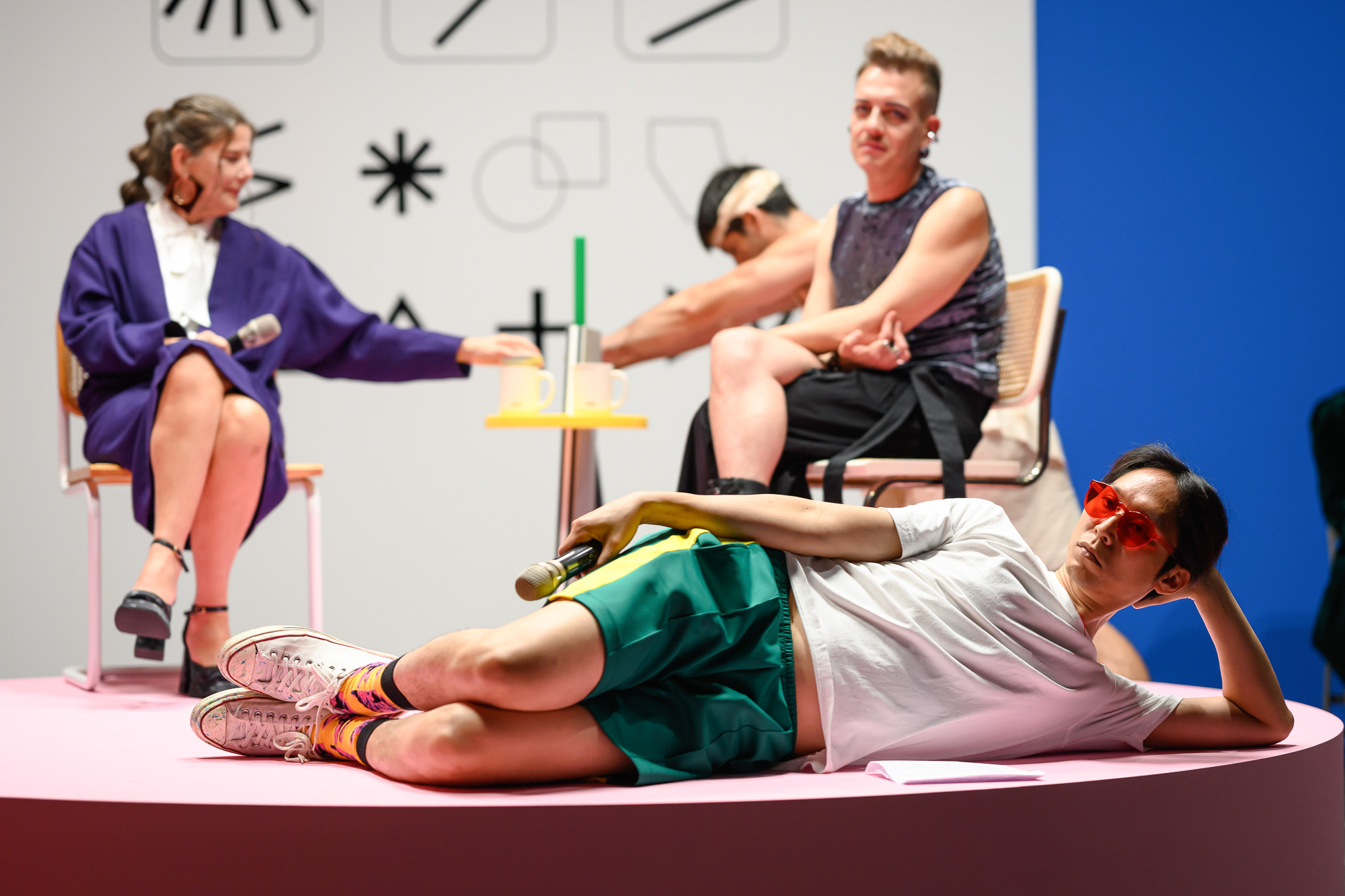

After 20-something takes, it was clear that Adolf Hitler might actually be enjoying drowning in a stream of urine, loosed from beneath a bright yellow sun dress. There was no extrapolating any semblance of a plot from the spectacle of a notorious historical dictator—reimagined as a bold-shouldered 1980s screen starlet—prostrating herself beneath a golden shower. Still, a large audience gathered to watch artist Su Hui-Yu shoot footage at his soundstage on the top floor of Taipei’s Museum of Contemporary Art (MOCA). This shoot was one of many that took place concomitantly with Su’s exhibition, in which the studio was a central work. Rumors swirled in the crowd about what the gist might be—a whimsical conference of World War II-era leaders. However, what was obvious was that the film resulting from the production ongoing throughout Su’s exhibition, “The Trio Hall,” would be an (albeit humorous) ode to the Xan Ting (三廳) films, a genre popular during Taiwan’s era of martial law.
Frequently adapted from the romantic page-turners of Taiwanese literary legend Qiong Yao, Xan Ting films occupy a unique niche in the history of Taiwanese cinema. On the one hand, the films served as light-hearted escapism, offering stories that marry the values of an older generation with the aspirations of youth, framing romantic love as a means of transcending the repression of authoritarian rule. On the other, the characteristic “three halls” of the genre’s moniker in which the stories were often set—the living room, the disco, and the dining room—worked to obfuscate the street-level realities of Taiwan under martial law. Instead, in their intimate and enclosed settings, these movies could harken back to a nostalgic vision of the Chinese mainland, fresh in the minds of recent civil-war migrants.
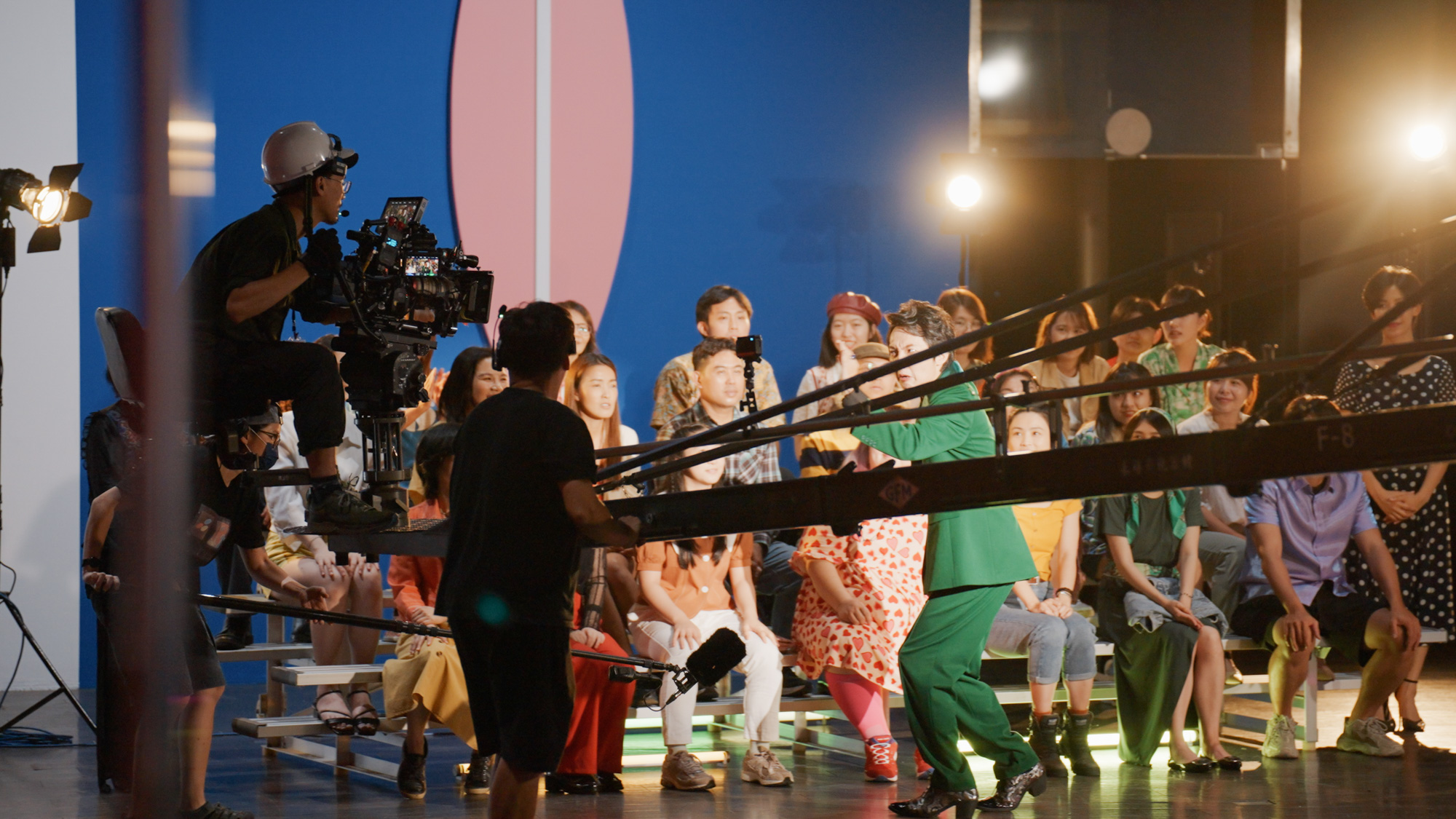
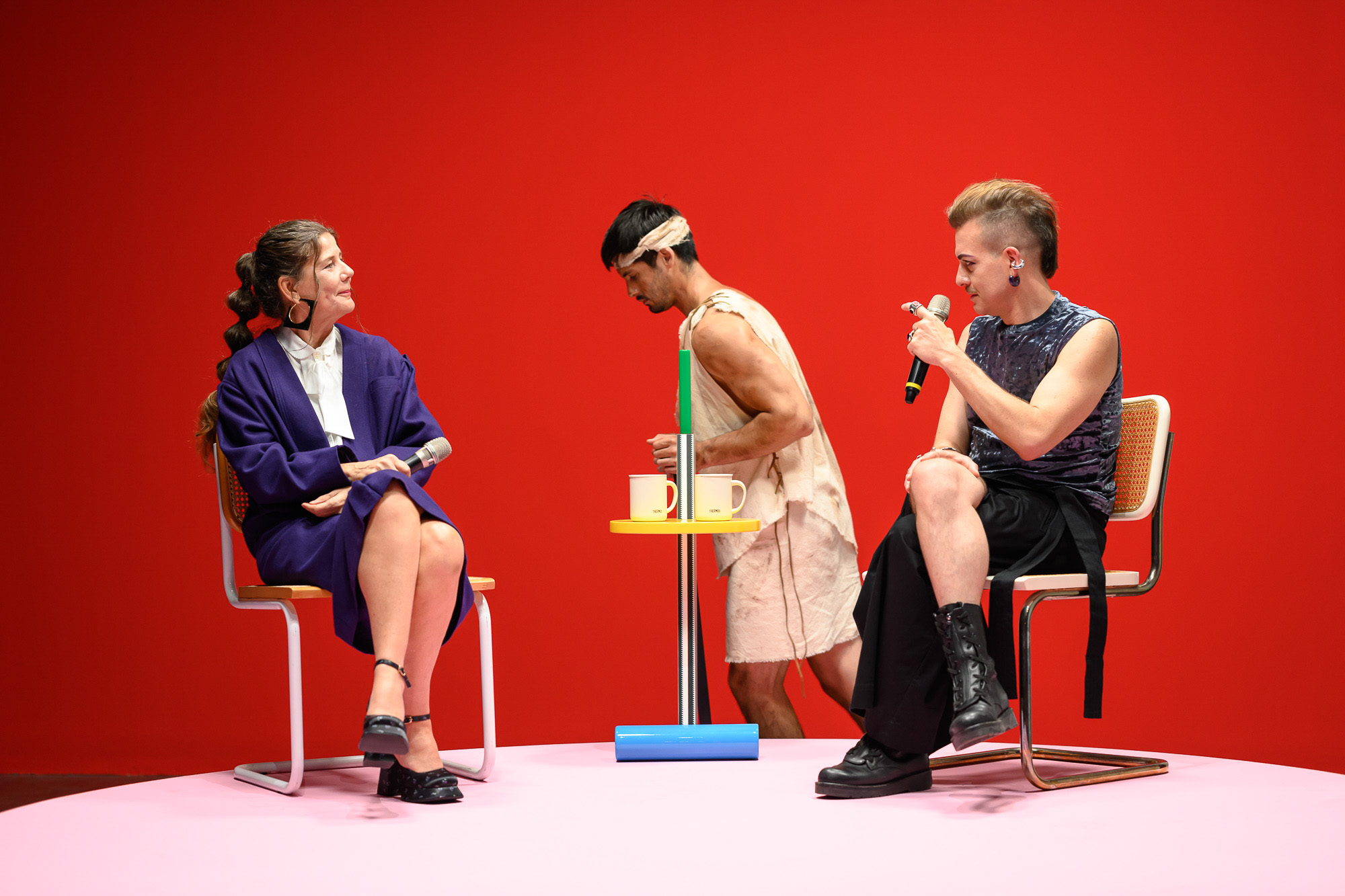
In Su’s work, the axis where nostalgia intersects with dissatisfaction is o ften generative. The artist uses a technique he calls “re-shooting” to revisit cultural relics of recent history with an alternative interpretive lens. Much like the incessant lineup of reimagined and retooled blockbusters that haunt the multiplex, his films invite the past to slip on the costume of the present, and vice versa. His reclamation of the remake allows us to zoom in on the concerns shared by just a few generations past—rising authoritarianism and unprecedented booms in technology, to name a few—and view them through a filter we can get behind.
His use of the technique often more specifically hones in on the era of martial law (1949–87) and illuminates the long shadow of the policy’s impact on Taiwanese society and culture. In bulldozing the fourth wall and inviting museum-goers to witness his remaking of the Xan Ting, the artist was able to guide his multigenerational Taiwanese audience toward a collective reckoning with this nostalgia, while simultaneously dismantling the hermetically sealed, idealized world that frames it. Pulling our perspective back to include the camera rigs and boom mics reminds us of the level of production that fantasy is indebted to—in the early days of Taiwanese television, production that was mostly carried out by private, government-affiliated interests—and offers the possibility of intervention to all. However, curator Eugenio Viola’s notion that “visitors [are] converted into active participants” felt insincere. The enforced hush of set, alongside the labyrinth of belt-barriers dictating an appropriate route through the going-on, gave a distinct hands-and-feet-inside-the-ride-at-all-times impression.
For this re-shooting to take place in “The Trio Hall,” Su transformed three of MoCA’s upstairs exhibition spaces into a fully functional production studio that felt conspicuously open. From the long hallway, workspaces were on full display through windows and doors, peeping encouraged. On off days when they sat empty—no cameras rolling, no post-production to be done—each was arranged like a detailed diorama of some aspect of the film production line. However, this was no historical restaging, harkening back faithfully to the dawn of Taiwanese television. Rather, Su’s studio proudly bore telling hallmarks of the aggressively camp, transhistorical mashup he seemed to be cooking up.
In the “office,” a long, board-room table sat beneath glossy framed snapshots of Su’s stars, while tongue-in-cheek, screen-test style footage rolled on the far wall. In the adjacent makeup and costume room, a spiral patterned carpet brought a retro look that demanded focus from the neatly racked power suits and large floor-length mirror, demanding also that any would-be selfie artists slipped protective covers over their shoes before taking a shot. The room’s tidiness on non-production days was a stark contrast to the mountains of makeup and drag that dominated during working hours—bored actors writhing with their iPhones on the tiny scraps of floor that were spared from piles of shoes and costume jewellery. In the final room, dedicated to post-production, an editing suite sat with its monitors facing outward, confronting any audience that gathered in the hall. Behind it, two red screens were striped by flat white wavelengths that quivered only slightly now and then as a recorded speech by Chiang Kai Shek droned throughout the space.
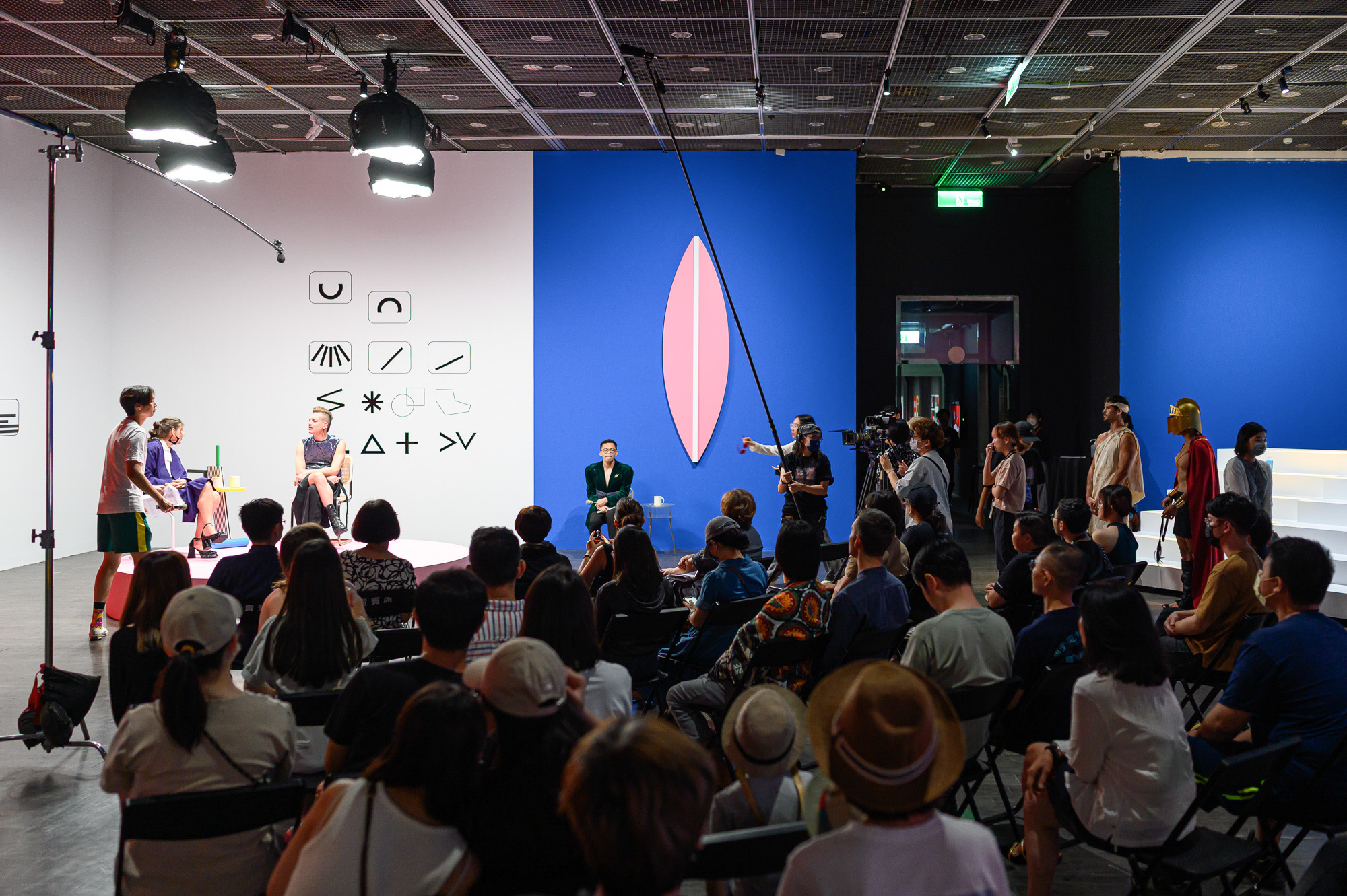
However, equally as important to Su’s production was the irreverent logic of the variety show; a Western cultural import that dominated much of the early days of Taiwanese television. In fact, taking a cue from beloved broadcast heavyweights such as Frankie Kao, who in turn assimilated such elements of global media for young audiences increasingly hungry for outside styles and perspectives, seems to have done much to shape the artist’s rendition of a Xan Ting. Following on from the hive of productivity that preceded it, Su repurposed the main space of MoCA into his studio. The lofty walls were washed in vivid shades of red, pink, and blue, and affixed with sleek geometric panels that worked to create the effect of backdrops, or even scenery, in the places where the bold and satisfying lines of sixties modernism clashed with the camp technicolor palette of the eighties. The wide floor space was furnished with perches just as much for being seen on as being seen. In one corner a round, cotton-candy-pink podium seemed almost tense with anticipation of any excuse to twirl. In another sat a flight of white stairs to nowhere—bleachers similar to those that The Temptations crooned from during their 1971 appearance on the Ed Sullivan Show.
Variety shows were at peak popularity during a time when Taiwan was beginning to renegotiate its identity on the world stage, and the genre was political in its own right. Ed Sullivan himself is well remembered for his commitment to civil rights and Black liberation in the United States during the same period as martial law. As such, the form is an apt reference for Su’s re-shooting. In fact, the artist’s acknowledgement of this global influence on Taiwanese television history serves to pose a perhaps unexpected anchor for the work being made in The Trio Hall.
The three large monitors that relay The Urgent Scenes No. 1 (2023) leaned up against the wall in the exhibition’s first room like stone tablets. Surrounded by artifacts of Taiwanese television history—vintage TV guides and kitsch workout VHS tapes—they stood out less as relics, and more like a broadcast deconstructed, suggesting something closer to the possibilities of television in the making than the medium’s historical achievements. Aggressively illuminated in red, green, and blue—the building blocks of the color displays we take for granted today—they create portraits out of contemplative interviews with representatives of Taiwan’s international community in all its diversity. However, as these people muse on the crises of our day, from impending war to the rapid mutation of AI, their voices and concerns overlap and muddle into a hubbub similar to the chatter of a crowded train station. The effect, for English speakers at least, is an audience hunched inelegantly over the audio equipment, trying to parse meaning from a work that refuses coherence.
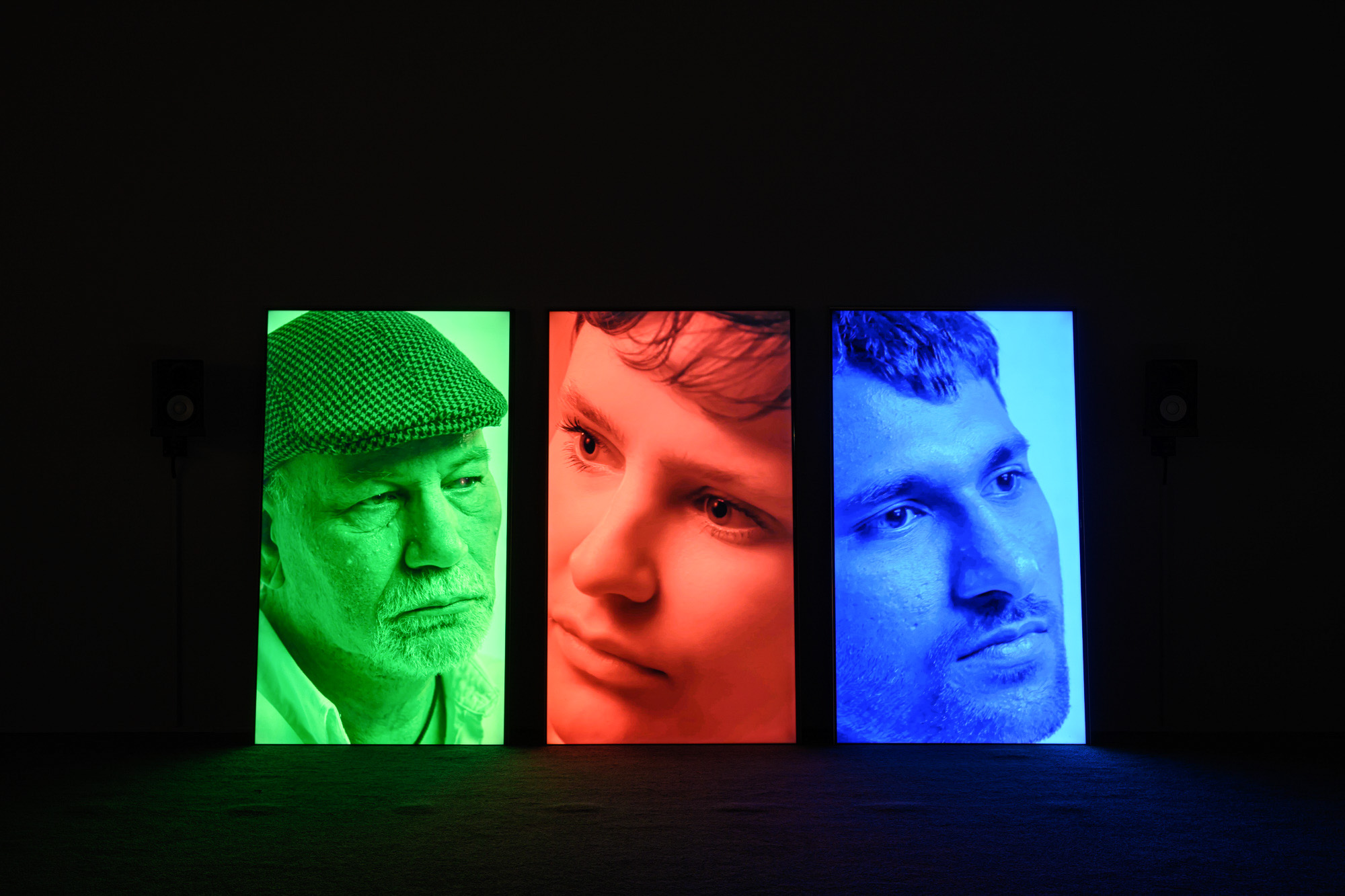
However, “The Trio Hall” did not leave us hanging. Instead, Su offered up his exhibition as a stage from which to sing and shout about the issues facing not just a country, but a world in crisis. In the early days of Taiwanese television, equipment was cobbled together out of parts sourced from Japan and the US. However, in plucking the Xan Ting from the annals of broadcast history and recycling a cherished trope, Su reciprocated this field of influence. His work frames this uniquely Taiwanese genre, as well as Taiwan’s geopolitical significance, as a platform from which the anxieties of the contemporary—issues that we’ve all tuned in for—might be expressed.







